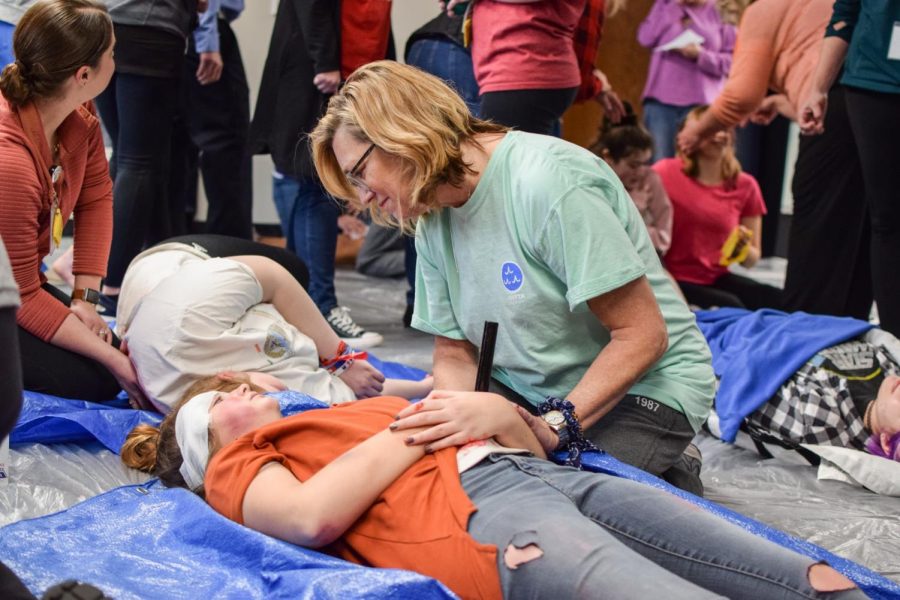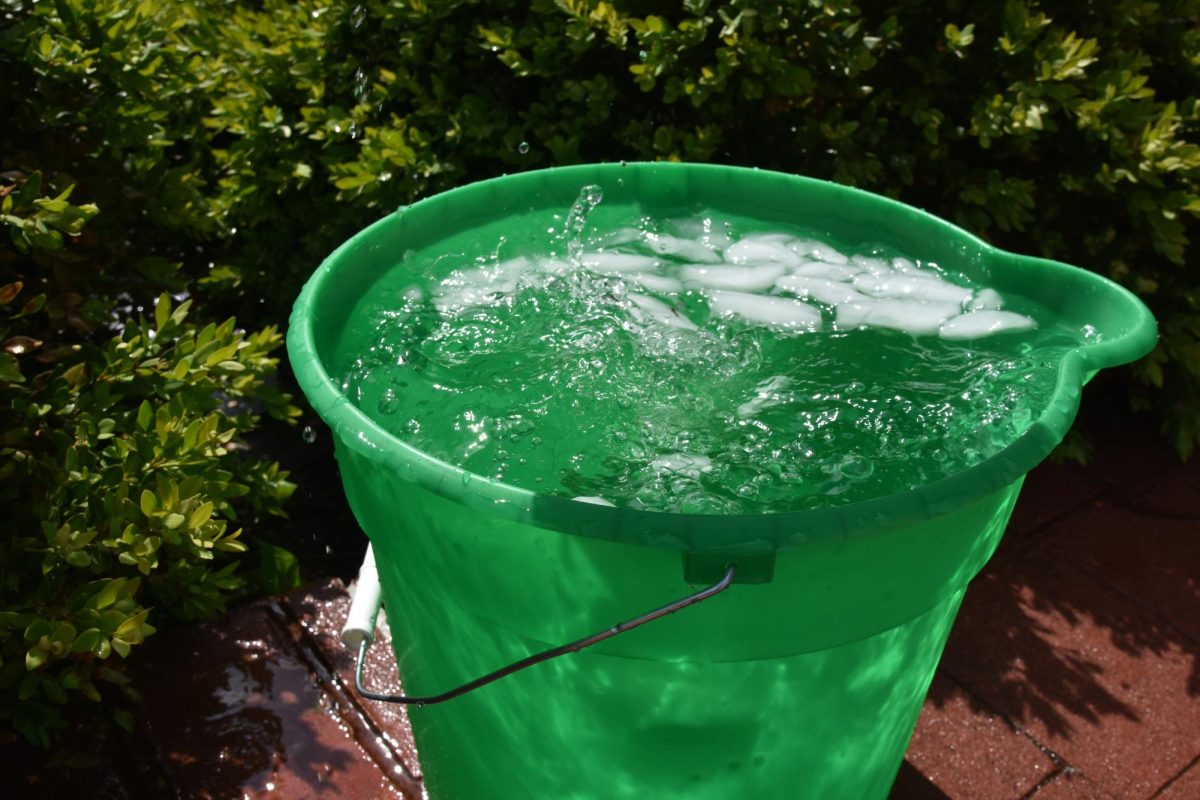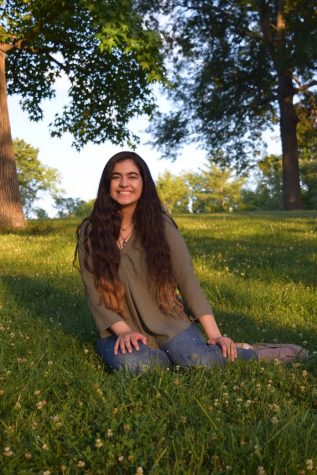With pencils impaled in abdomens, bleeding arms and a number of other fake injuries applied with makeup, a group of 13 theater students helped all of Parkway’s nurses train for a mass casualty situation. The practice scenario was for damage inflicted by a tornado.
“The injuries were whatever could possibly happen in an environment like that. We had some burns because in a building being torn apart, chemicals fly. There were flying object injuries, head injuries. It was the idea of having a lot of people being injured, and how you would organize that medical care in that scenario,” Nurse Lois Burch said.
The students and nurses ran through the drill twice. Both times students were placed into categories of green, yellow or red after the nurses assessed the severity of their injuries.
“It’s one of those things where, to be able to do that hands on, you need to see what that process looks like. You have to somehow organize chaos because it would be [chaotic],” Burch said. “It was very helpful to see how it could work. They did amazing jobs with the makeup. I know if someone is impaled, you don’t pull that out, but to actually see the dressing around it was good. I learned a lot.”
Theater students spent three hours having professionals put on makeup representing different degrees of injuries.
“Me and other kids just had small blood and scars, while other kids had major injuries, such as a broken back, ribcage or jaw,” senior Olivia Bradshaw said. “Fifteen minutes before the drill, we were all just standing in the English halls, and whenever they said ‘go,’ we’d have to start screaming.”
The nurses would then come over and ask the students if they were okay, how much they were hurting, if they could walk or answer questions about their name or the year.
“In the first round, I was put into the urgent group, the red group, for mental trauma. They gave me special instructions to react slowly. When people asked me a question, I had to wait a few seconds and then answer,” sophomore Grace Eschbach said. “They were able to relay information to each other quickly to be able to get the job done. I think it went well, and the people who were training did their jobs and seemed like they knew what they were doing and were capable.”
If a student could answer all of the questions clearly and was not screaming as much as other students, they were put in the green group.
“Some of us were going through and assessing everybody and marking their severity. Others of us were helping move these people to whatever triage level they assessed at. Then, we would move them, or if they couldn’t walk, we carried them to that triage level. We’ve had classroom time on it before, but we’ve never had that in action, where we’re actually acting it out. I’m glad that we did it because it’s a situation I think about,” Burch said.





![Smiling in a sea of Longhorns, Fox 2 reporter Ty Hawkins joins junior Darren Young during the morning Oct. 3 pep rally. The last time West was featured in this segment was 2011. “[I hope people see this and think] if you come to [Parkway] West, you will have the time of your life because there are so many fun activities to do that make it feel like you belong here. I was surprised so many people attended, but it was a lot of fun,” Young said.](https://pwestpathfinder.com/wp-content/uploads/2025/10/Edited2-1200x798.jpg)
![West High seniors and families listen as a representative of The Scholarship Foundation of St. Louis, Teresa Steinkamp, leads a Free Application for Federal Student Aid (FAFSA) workshop. This session, held in the library, provided guidance on financial aid, scholarships and student loan options. “This event is very beneficial for any seniors who are applying to or considering applying to colleges after high school [because] the cost of college is on the rise for seniors and parents,” college and career counselor Chris Lorenz said.](https://pwestpathfinder.com/wp-content/uploads/2025/09/DSC_4478-1200x778.jpg)
![Senior Kamori Berry walks across the field during halftime at the Homecoming football game on Sept. 12. During the pep assembly earlier that day, she was pronounced Homecoming Queen. “I thought it was nice that the crowd [started] cheering right away. I know [my friends] were really excited for me, and my family was happy because typically non-white people don't win,” Berry said.](https://pwestpathfinder.com/wp-content/uploads/2025/09/DSC7046-Enhanced-NR-1200x798.jpg)



![Pitching the ball on Apr. 14, senior Henry Wild and his team play against Belleville East. Wild was named scholar athlete of the year by St. Louis Post-Dispatch after maintaining a high cumulative GPA and staying involved with athletics for all of high school. “It’s an amazing honor. I feel very blessed to have the opportunity to represent my school [and] what [it] stands for,” Wild said.](https://pwestpathfinder.com/wp-content/uploads/2025/05/unnamed-6-1200x714.jpg)
![The Glory of Missouri award recipients stand with their certificates after finding out which virtue they were chosen to represent. When discovering their virtues, some recipients were met with contented confirmation, while others, complete surprise. “I was not at all surprised to get Truth. I discussed that with some of the other people who were getting the awards as well, and that came up as something I might get. Being in journalism, [Fellowship of Christian Athletes and] Speech and Debate, there's a culture of really caring about truth as a principle that I've tried to contribute to as well. I was very glad; [Truth] was a great one to get,” senior Will Gonsior said.](https://pwestpathfinder.com/wp-content/uploads/2025/04/Group-Glory-of-Missouri.jpg)

